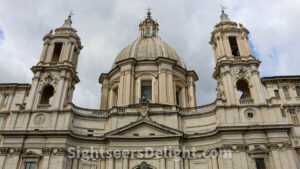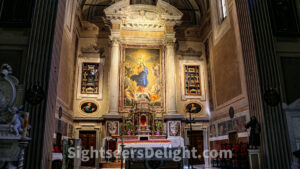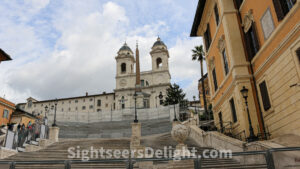The 17th-century Baroque Sant’Agnese in Agone faces Piazza Navona, the location where the Saint Agnes, an early Christian saint, was martyred in the ancient Stadium of Domitian. Pope Innocent X instigated construction of the church, which began in 1652. Architects Girolamo Rainaldi and his son, Carlo Rainaldi, oversaw construction as did architect Francesco Borromini.
Capuchin Crypt
For a uniquely different perspective of the “Eternal City,” head over to the Capuchin Crypt. Located beneath Santa Maria della Concezione dei Cappuccini, the crypt is home to skeletal remains of thousands of bodies said to be Capuchin friars buried by their order, which adorn the crypt’s walls as a tribute to how swiftly time on Earth passes and humans’ mortality.
Santa Maria Novella dates to the mid 13th century. A pair of Dominican friars, Fra Sisto da Firenze and Fra Ristoro da Campi, designed the church. It is known as Novella, which means “new” because it was built on the site of the 9th-century oratory of Santa Maria delle Vigne. Leon Battista Alberti completed the church’s façade in 1470. Admittedly, it would be nearly impossible to list every church in Florence that is worth seeing, not to mention how dif-ficult it would be to actually visit each church. Certainly the four aforemen-tioned churches offer a nice overview and can easily be seen in a day or two, or spread out over a longer period of time, depending on how long one plans on spending in Florence.
The Spanish Steps or Scalinata di Trinità dei Monti in Italian links Piazza di Spagna and Piazza Trinità dei Monti, which is home to the church of the Santissima Trinità dei Monti or Trinità dei Monti. Francesco de Sanctis designed the staircase, which was completed in 1725.



